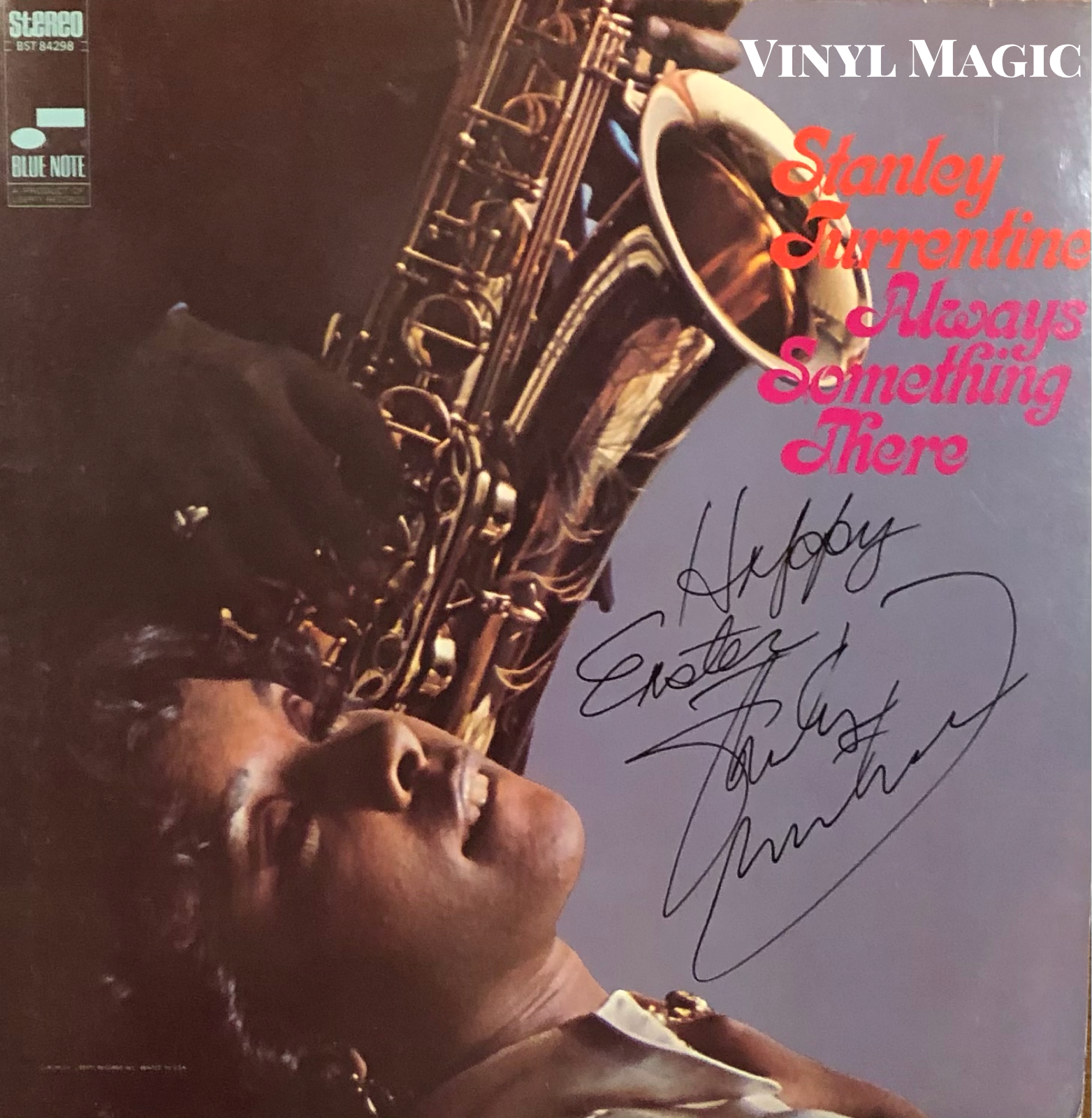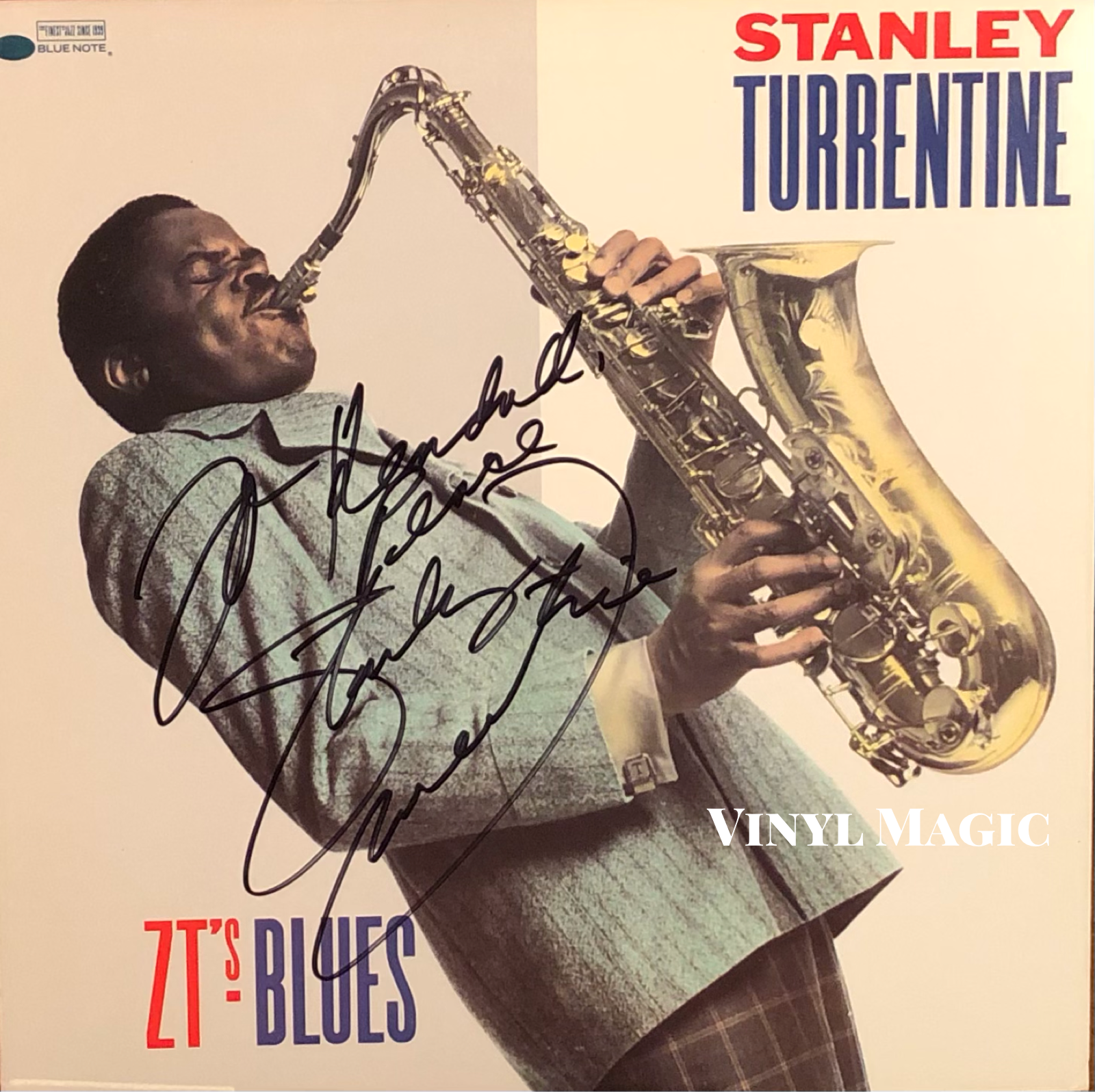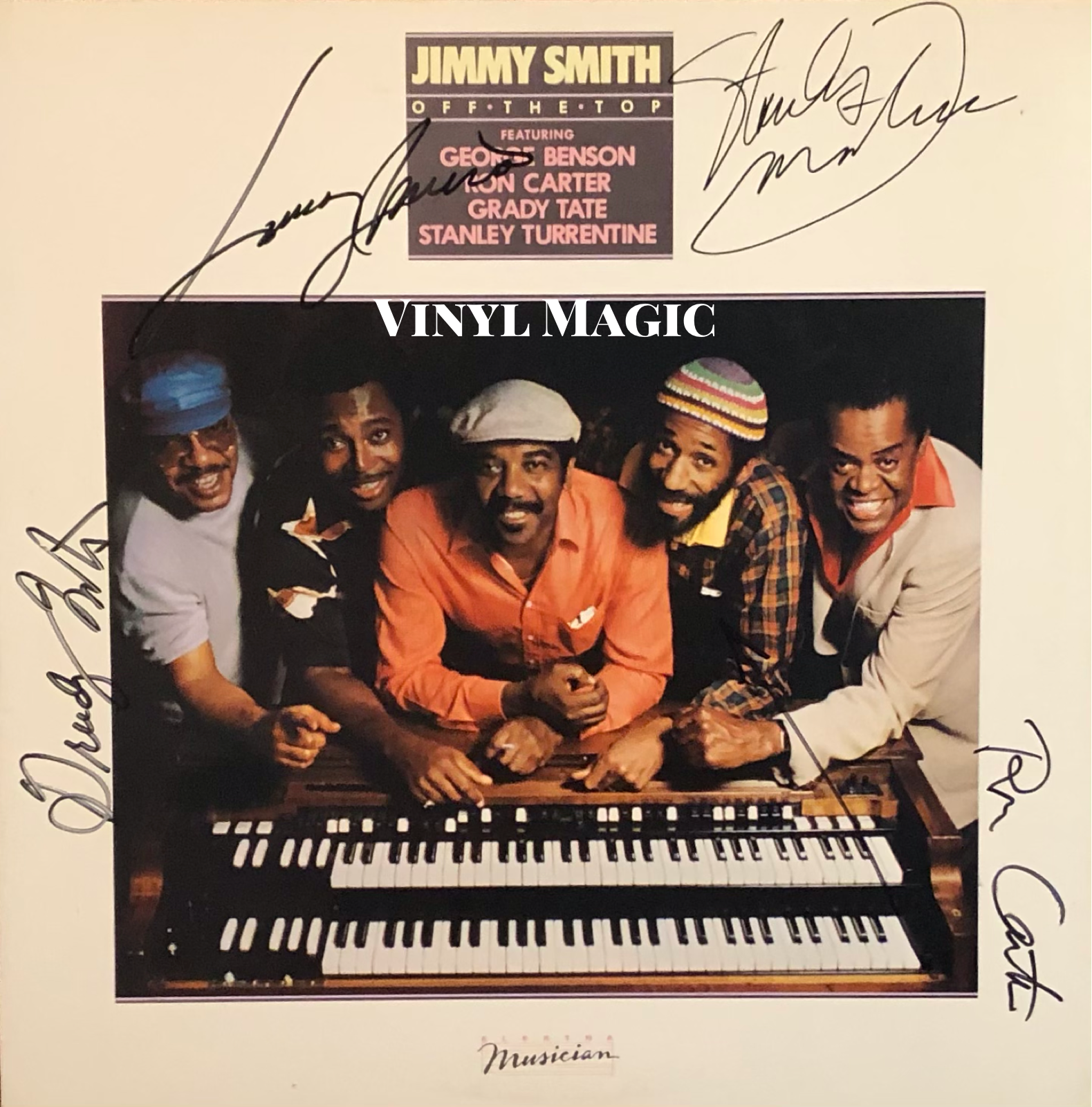Stanley Turrentine and Me...
My music has been called rock, be-bop, rhythm and blues, jazz fusion… I just let others decide what my music is. If I hear something and I like it, I’ll play it. I consider myself playing good music.
Stanley Turrentine
Dearly Beloved (1961) signed by Stanley
We lived a couple of houses apart outside Philadelphia, but hardly saw each other because we were both doing our own thing. I saw him one day, and he asked me to make a record date. I just got in my car, took my horn, drove up to the studio and recorded - no rehearsal, no nothing.”
Stanley Turrentine on recording Midnight Special in 1960 with his neighbor Jimmy Smith
Midnight Special (1960) signed by Stanley, Jimmy Smith, Kenny Burrell
The arts were a priority, you had to take some kind of music appreciation class—which they’ve cut out now—and they’d furnish you with instruments. A lot of guys who came up with me, if it hadn’t been for the school system in Pittsburgh, they wouldn’t be playing today. They wouldn’t have been able to afford a saxophone or trumpet. The schools had all those instrument that you could use. If you played saxophone, you could take the horn home and practice until the end of the semester. The teachers there were excellent. We had all kinds of activities; there were art classes, and bands. My first band was called Four Bees and a Bop. I used to play for proms and basketball games. After the basketball games, they’d assemble in the gym and have a dance. It gave guys a chance to play. Oh, I just wanted to play music. I wasn’t exactly that big on school. Only reason I went to school was for lunch and band.
Stanley Turrentine on growing up in Pittsburgh
Midnight Blue (1963) signed by Stanley, Kenny Burrell, Ray Barretto
“George, did you know when I learned to play the blues?”
’ I said, ‘No.’
“Well, I was in Texas, and I was playing at this bar, you know, and back then you had to walk the bar, that was a kind of a corny tradition. But I was a young stud, and I said, I’m not doing that old time stuff. So somebody said, ‘walk the bar’ and I said, ‘I’m not walking the bar, I’m playing the saxophone,’ and he kept asking and I kept refusing, so later in the night, I went up to him, and he had this gun with a long barrel, and he said, ‘Look, I want you to walk the bar and spill nary a drop of whiskey!'” And Turrentine said he walked the bar, and that’s when he figured out what the blues was really about! He played the blues for real!”
Stanley Turrentine telling pianist George Cables how he learned to play the blues
Blue Hour (1961) signed by Stanley, Gene Harris
Stanley Turrentine, a great American jazz saxophonist and composer, was born in Pittsburgh in 1936, He was surrounded by musicians: his dad was a saxophonist, his mother played piano, and his older brother Tommy played trumpet professionally. At the start of his career, Stanley played with Lowell Fulson (and a young Ray Charles!), then with the great drummer Max Roach in the late 1950s, before leading his own bands in the 1960s for the incomparable Blue Note record label.
Joyride (1965) signed by Stanley
Stanley recorded more than twenty-five records for Blue Note as a leader (more than fifty-five overall), and they are some of the great jazz recordings of all time. Stanley had a big, fat, warm enveloping sound on tenor saxophone. He was brawny and muscular on some songs, tender and heartfelt on ballads, sweet and slow as molasses on soul-drenched blues. Never a strict jazz purist, Stanley was a pioneer in Soul Jazz, and recorded some killer versions of the hit songs of the day: Aretha's "Dr. Feelgood", Diana Ross' "Ain't No Mountain High Enough" and Burt Bacharach's "The Look Of Love" never sounded so fresh and swinging.
Rough‘N’ Tumble (1966) signed by Stanley
In 1960, Stanley married Shirley Scott, a great Hammond B3 jazz organist, moved to Philadelphia, and they recorded eight albums together. Highlights include soulful versions of Dylan's "Blowin' In The Wind', Percy Sledge's "When A Man Loves A Woman" and The Beatles' "Can't Buy Me Love." Shirley also introduced Stanley to the father of the Hammond B3 in jazz, Jimmy Smith, and they recorded Midnight Special (1960), Back At The Chicken Shack (1960), and Prayer Meetin' (1961). These are important, influential and classic Blue Note releases which highlight the mastery of Jimmy Smith's jazz organ chops with Stanley's formidable soul and blues blowing.
Prayer Meeting (1961) signed by Stanley, Jimmy Smith
I saw Stanley many times over the years. He always had a great band with him and his deep, beautiful sound never wavered. He was kind, generous and signed a bunch of albums over the years. The last time I saw Stanley, he was playing a week long gig at the Blue Note jazz club in New York City in September, 2000. I went to the Thursday night show. Stanley was in great form, and as usual, closed his set with "Sugar", a song he wrote and had great success with. We talked a bit.....then I left. He was to play the rest of the weekend. Sadly, he finished his Saturday night show and never showed up for his Sunday performance. He had a stroke in his hotel and died on September 12, 2000.
Stanley Turrentine left a wonderful legacy of songs and performances, and his soul lives on in those wonderful grooves and sounds.
Let It Go (1966) signed by Stanley
Easy Walker (1966) signed by Stanley, McCoy Tyner
Always Something There (1969) signed by Stanley, “Happy Easter”
Flipped (1970) signed by Stanley
Everybody Come On Out (1979) signed by Stanley
Choice Stanley Turrentine Cuts (per BKs request)
https://www.youtube.com/watch?v=oLaIrVB1av4
“Sugar” Sugar 1970
https://www.youtube.com/watch?v=zybdpkpmiJo
“Walk On By” Rough N Tumble 1966
https://www.youtube.com/watch?v=6E0avvA9fz0
“Since I Fell For You” Blue Hour with Gene Harris 1961
https://www.youtube.com/watch?v=Jb9LRckV3XU&list=PL654AD15320E9DB0D&index=5
“Someone To Watch Over Me” Comin’ Your Way 1961
https://www.youtube.com/watch?v=RcOIUECTPtU
“Back At The Chicken Shack” Back At The Chicken Shack 1960
https://www.youtube.com/watch?v=ATdV00j7ALw
“Ain’t No Mountain High Enough” Return Of The Prodigal Son 1967
https://www.youtube.com/watch?v=jeGKJdWTxC4&list=PLEyxWPyoryRIwoHGYNGnVIW1PFOnURnXL&index=2
“I Almost Lost My Mind” Prayer Meetin’ 1961
https://www.youtube.com/watch?v=S0cEVHZpNtQ
“In The Still Of The Night” Soul Shoutin’ with Shirley Scott 1963
https://www.youtube.com/watch?v=1SRFtEkxUGs
“Come Rain Or Come Shine” Up At Minton’s 1961
https://www.youtube.com/watch?v=CIontX93pQw
“Blowin’ In The Wind” Common Touch with Shirley Scott 1968
https://www.youtube.com/watch?v=Xa4UECLqR7E
“Feelin’ Good” Rough n Tumble 1966
https://www.youtube.com/watch?v=b89q0o0SuE8
“Sugar” live 1998
ZT’s Blues (1961 recordings, released 1985) signed by Stanley
Wonderland (1984) signed by Stanley, Ronnie Foster
Fourmost (1991) signed by Stanley, Jimmy Smith, Kenny Burrell, Grady Tate
Off The Top (1986) signed by Stanley, Ron Carter, Jimmy Smith, Grady Tate
















